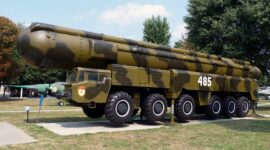
10 Fuel Tube of Soviet Flamethrower ROKS-3, c. 1943
Fotogalerie
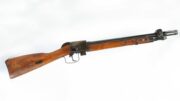
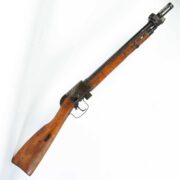
In 1942, a flamethrower based on the ROKS-2 flamethrower was designed. The basic difference was apparent at first glance and involved the shape of the tank for the incendiary mixture. It was no longer in the shape of a backpack covering the actual purpose of the device, but rather a more traditional shape of the tanks as seen in other flamethrowers.
The flamethrower consisted of a compressed air bomb and a pressure reducer for air flowing into the tank with the incendiary mixture. The pressure in the bomb was very high, 150 atmospheres (over 15 MPa), and the reducer reduced it to 17 atmospheres (1.7 MPa). Another component was the ignition mixture tank. Diesel fuel, crude oil, various mixtures of kerosene, gasoline and fuel oil and other were used in the ignition mixtures. The mixture changed depending on different temperature conditions. The ignition mixture was run through a hose from the tank to the gun. The latter was, as in the ROKS-2 flamethrower, in the shape of a rifle. However, the method of igniting the mixture differed. When the trigger was pulled, the ignition mixture was forced into the gun under the pressure of compressed air, passing through it and igniting at its mouth. This was done by ignition cartridges which were placed in the chamber in front of the muzzle. These were initiated simultaneously as the ignition mixture passed through the gun after the trigger was pulled. The flamethrower with the combustible mixture weighed 23.2 kilograms and the full tank capacity was 10.7 litres. The range of the flamethrower was 30 to 35 meters.
After its adoption by the Red Army, ROKS-3 was used until the end of World War II. In addition to the rifle-shaped flamethrower, the Soviet Army also used a pistol-shaped one that worked on the same principle.
The gun is shaped like a Soviet Mosin-Nagant model 1891/30. It has a lighter on the barrel with a chamber for ignition cartridges. The gun was 490 mm long and weighed 4 kg.
Aktuálně
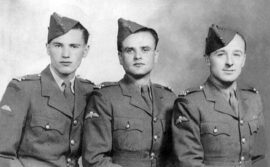
Tak trochu zamrzlé spojení
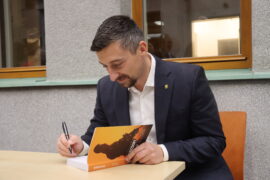
Válečný veterán Petr Matouš pokřtil v Armádním muzeu Žižkov svou knihu. Patronkou je i ministryně obrany Jana Černochová

Call for Papers: Tváře brannosti – branná výchova, branné spolky a civilní obrana v dějinách

Richard Tesařík / 3. 12. 1915 - 27. 3. 1967
